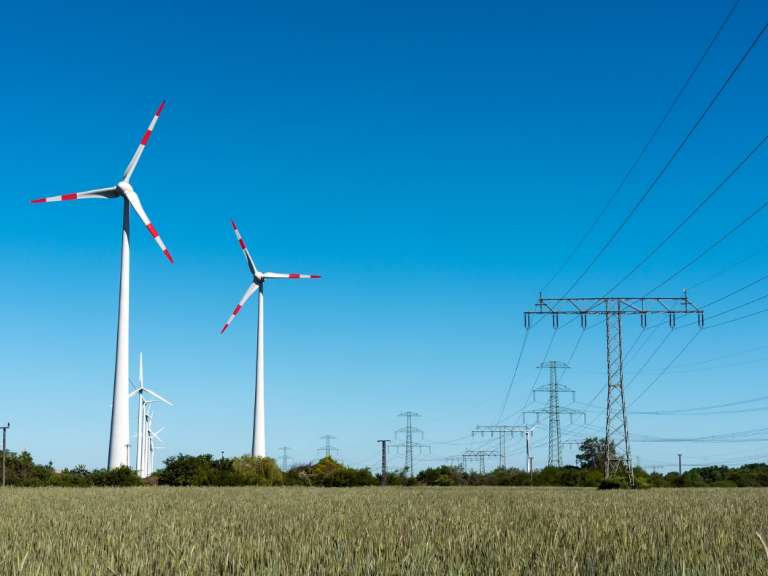Four Lessons From the German Power Market
Richard StuebiWith renewable energy penetration surging to record levels, experience from the German power market is of worldwide interest.

The German power market is rapidly transforming from a system founded upon centralized coal and nuclear power plants into a twenty-first-century electricity grid based predominantly on renewable energy—most of which is intermittent and distributed in nature.
As electricity grids worldwide also begin relying more heavily on renewable energy sources, there is a common concern that grid operators and power markets will struggle to cope. Experience from the German power market is therefore of intense interest to power generation companies and transmission organizations across the globe.
Here are four observations from Germany's renewable energy experiment, which could serve as predictions for other regions around the world.
According to BNetzA, renewable energy sources supplied 27 percent of all electricity generation in Germany in 2016—a degree of penetration unmatched in any other major power grid. However, this has created some problems in the wholesale electricity price structure. When abundant renewable energy production has coincided with low demand, prices in Germany's energy-only wholesale market have sometimes turned negative.
At other times, during periods of highly variable renewable output, energy price spikes have occurred, as online generation assets incur higher operating costs to accommodate grid fluctuations. This price volatility is not just expected; as Bloomberg has noted, it's been promoted by German authorities to induce trading liquidity.
Facing low and volatile pricing for electricity production, incumbent power generation companies have suffered mightily. Per the World Stock Market News, the two main historical competitors, E.On and RWE, have both undergone major financial restructurings. To provide power generators greater financial assurances that induce them to keep their plants online, German authorities have since made major changes to wholesale market structures, according to Clean Energy Wire.
Electricity markets elsewhere experiencing strong growth in renewables—like California, Texas, New York, and New England in the US—may thus face lower average prices with higher volatility in the future. If market prices fall far enough, significant wholesale market redesigns may be necessary to incentivize sufficient capacity resources to remain in service to preserve grid reliability.
Germany is fortunate to have a robust transmission grid, including ties to neighboring markets for exchanging energy surpluses. Consequently, the unparalleled reliance of the German power system on intermittent renewable energy has not produced notable operational difficulties. Indeed, data from BNetzA indicates declining outage rates in Germany.
Elsewhere, large and highly interconnected regional power grids surrounded by other strong systems—such as those in the middle of the US—will likely find the same result: A 2016 Southwest Power Pool (SPP) study confirmed the region's ability to reasonably manage up to 60 percent penetration of wind energy.
However, smaller or less-integrated electricity systems, such as those in remote regions of the world, will likely find shifting to intermittent renewables more challenging. Smaller grids have less freedom when improving operations and, perhaps more importantly, when coping with crises at extreme moments.
To minimize the potential for higher costs or reduced reliability, utilities and system operators should pursue cost-effective transmission upgrades that increase grid responsiveness. To the fullest extent possible, neighboring electricity markets should work together, rather than go it alone.
BDEW (the German Association of Energy and Water Industries) projects that more than 10 percent of Germany's power generation base—26 GW—will retire between 2017 and 2020, according to Timera Energy. Given the increasing quantities of intermittent renewables being added to the grid, enhancing the operational flexibility of conventional generation plants will be increasingly valuable—in Germany and globally. These assets will remain critical to ensuring reliability through massive swings in the power system. Owners of existing power plants should aggressively consider solutions that improve operational flexibility.
For new assets replacing retiring capacity, the most prominent option, natural-gas-fired generation utilizing advanced turbine technology, is fortunately highly flexible. These gas plants are able to start up, shut down, or adjust output levels very rapidly. Also fortunately, delivered natural gas prices have fallen in most parts of the world, with lower-cost supplies enabled by fracking and expanded LNG infrastructure. And, in itself, shifting from coal to gas reduces emissions.
This trend toward increased natural gas consumption for electricity generation will likely continue for some time—in Germany and many other markets worldwide.
Having committed in 2011 to shutter the country's entire nuclear fleet by 2022, according to Deutsche Welle, the German government is now considering an end date for all coal-fired generation, as well. Meanwhile, wind and solar development in Germany has been substantially aided by lucrative feed-in tariffs, according to Fortune.
The asset base of the German electricity system is largely the result of picking winners and losers—adding or closing particular types of generation capacity, depending on what's currently favored by policymakers.
However, if reducing carbon emissions is the underlying goal of German energy policy, its effectiveness has been dubious: Per Climate Home News, carbon emissions in Germany have actually risen slightly in recent years. The country could have achieved better results at a lower cost if it had instead implemented a technology-agnostic policy mechanism, such as a cap-and-trade system or a carbon tax.
Other nations looking to Germany as an example may accelerate their energy transition more cost effectively by enforcing desired outcomes and then letting the market do the work, rather than by steering the power generation asset base prescriptively.
Coal consumption will continue to decline if the EU is to meet its future emission targets, but conventional power plant operators are rising to carve out a new role for themselves.
Smart appliances, electric vehicles, and the smart grid will all play a vital role in consumer energy demand management.
The global LNG trade is picking up steam in 2018, changing the nature of power systems around the world. Asia is a big buyer, and the US is emerging as a big seller.